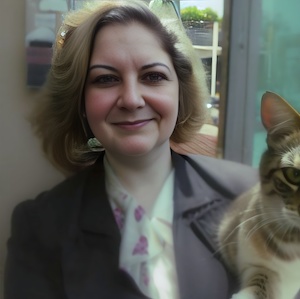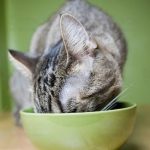Are you considering bringing a Bengal cat into your home? These exotic and stunning felines are known for their striking appearance, lively personalities, and affectionate nature.
But if you’re a potential Bengal cat owner, you may be wondering do Bengal cats shed? And if they do, how much? Shedding is a natural process in all cats, but it can vary widely depending on the breed, age, health, and other factors.

In this article, we’ll explore the ins and outs of Bengal cat shedding, from the amount and frequency of shedding to what factors can affect shedding, and how to manage it.
Whether you’re already a Bengal cat owner or simply considering adding one to your family, read on to discover everything you need to know about Bengal cat shedding. Trust us, you won’t want to miss this!
Contents
Do Bengal Cats Shed?
Yes, Bengal cats do shed. Shedding is a natural process that all cats go through, and Bengal cats are no exception. The amount and frequency of shedding can vary depending on a variety of factors, including genetics, age, health, and grooming habits.
Bengal cats have a short, dense, and lustrous coat that’s often compared to that of a leopard. Their fur is soft to the touch and requires minimal grooming compared to other cat breeds. However, they still shed, and during shedding seasons, you may find more fur around your home than usual.

It’s important to note that Bengal cats shed less than many other cat breeds, which is one of the reasons why they’re a popular choice for people with allergies. Additionally, they don’t typically shed year-round, but rather shed seasonally, often in the spring and fall.
If you’re a Bengal cat owner, it’s important to help manage shedding through regular grooming. Brushing and combing your Bengal cat’s coat on a weekly basis can help to remove loose fur and prevent matting. Regular bathing can also help to reduce shedding and keep your Bengal’s coat healthy and shiny.
What Factors Affect Shedding in Bengal Cats?
Several factors can affect shedding in Bengal cats, including:
- Genetics: Genetics can play a role in determining both the amount and frequency of shedding in Bengal cats. If they are descended from individuals with low shedding tendencies, they may inherit this trait and shed less.
- Age: The amount of shedding in older cats may vary depending on their health and overall condition. Additionally, skin conditions that develop as the cat ages can result in increased shedding.

- Health: A cat with health problems is more likely to shed excessively than a healthy Bengal cat, due to issues such as allergies, infections, and parasites.

- Diet: The shedding of your Bengal cat may be affected by their diet. An appropriate diet containing key vitamins, minerals and nutrients can help maintain a healthy coat with a glossy shine and reduce the amount of shedding.

- Grooming: It is essential to regularly groom Bengal cats in order to manage their shedding. Brushing and combing the coat on a weekly basis can help remove any loose fur, thus avoiding matting and further shedding.

- Environmental factors: Temperature and humidity are two environmental factors that can influence a Bengal cat’s shedding, particularly during the warmer months, when they shed their thick winter coat.
How To Manage Shedding in Bengal Cats
Managing shedding in Bengal cats requires a combination of proper grooming, nutrition, and environmental factors. According to veterinarians “Cats shed because their hairs follow a specific life cycle, and that cycle involves hair renewal.” Here are some tips to help you manage shedding in your Bengal cat:
- Regular grooming: Weekly brushing and combing of your Bengal cat’s coat is essential for managing shedding and maintaining a healthy, shiny coat. This grooming not only reduces fur loss, but also prevents matting.
- Proper nutrition: In order to reduce shedding in Bengal cats, it is essential to maintain a healthy and balanced diet. Providing them with high-quality food that contains the necessary nutrients, vitamins, and minerals can help keep their skin and coat healthy.

- Provide clean water: It is essential to provide your Bengal cat with clean and fresh water in order to maintain their skin and coat hydrated and healthy.
- Environmental factors: As temperature and humidity are environmental factors, Bengal cats may shed more during warmer months due to their thick winter coat. To ensure your cat is comfortable in its living space, provide them with a cozy bed to sleep on.
- Regular bathing: Bathing your Bengal cat regularly can help to manage shedding. Choose a gentle and moisturizing shampoo for bathing, as this will help remove loose fur and reduce shedding. However, do not over-bathe your cat – excessive bathing can dry out their skin and result in increased shedding.

Evgeniya Pavlova – iStock
FAQs
Can diet affect shedding in Bengal cats?
Yes, a healthy diet can reduce shedding in Bengal cats. Feeding your cat high-quality food that contains essential nutrients, vitamins, and minerals can help keep their skin and coat healthy and reduce shedding.
Can a Bengal cat’s shedding be a sign of health issues?
Yes, excessive shedding can be a sign of health issues in Bengal cats, such as allergies, infections, or parasites. If you notice your cat shedding more than usual or developing skin issues, it’s best to consult with a veterinarian.
Can over-grooming cause shedding in Bengal cats?
Over-grooming can lead to excessive shedding in Bengal cats. This is because over-grooming can damage the hair follicles and cause the hair to fall out. It’s important to groom your cat regularly, but not excessively.
How long does a shedding period typically last in Bengal cats?
As per veterinarians “Cats shed because their hairs follow a specific life cycle, and that cycle involves hair renewal.” The shedding period for Bengal cats usually lasts about three to four weeks, but this can vary depending on the cat’s age, overall health, and environment.
Well, It’s a Wrap
In summary, shedding is a normal occurrence for all cats including Bengal cats. Although Bengals shed less than other breeds, it’s still important to take steps to maintain their fur’s shine and health.
Regular grooming sessions accompanied by the right nutrition and access to clean water are good starting points in managing Bengal cat shedding. Additionally, providing your feline friend with a comfortable environment and regular baths will also help minimize shedding.
By taking into account these tips as well as being aware of commonly asked questions about Bengals’ shedding habits you can ensure that your pet has an enjoyable life full of optimum health and minimal hair loss with the support of a vet if needed for any excessive or irritated skin issues that arise along the way.
Charlene Pare is the founder of Cat Likes Best. She manages and strategizes the content published on this website. When she isn’t working, she enjoys exploring the city around with her Ameican Shorthair kitty–Moli. Being a technocrat and an avid cat lover, she also writes on pet tech products and some of the featured articles.





